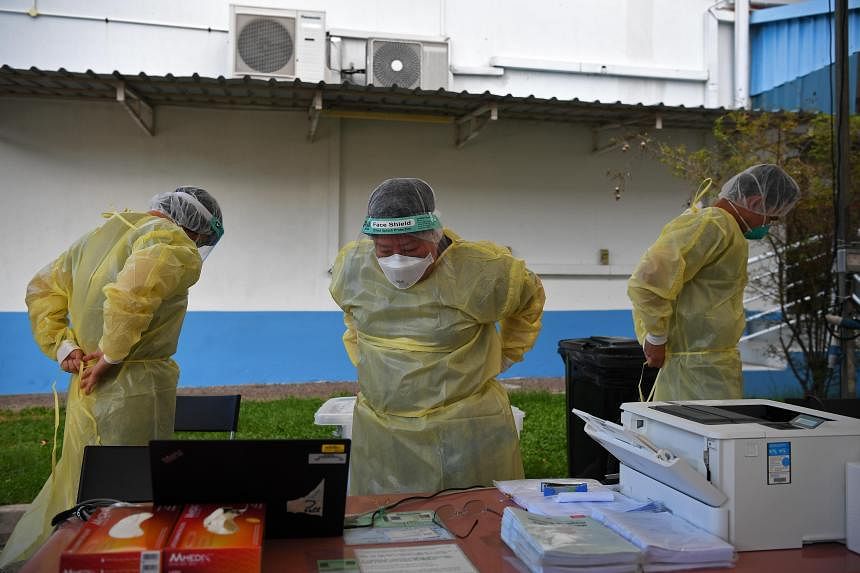SINGAPORE – Singapore will be able to mount different levels of responses to public health threats of varying severity, with changes to the Infectious Diseases Act (IDA) passed on March 7.
The need for this was a key takeaway from Covid-19, when the Government stepped up responses as the situation escalated and tapered down when the threat subsided, said Health Minister Ong Ye Kung in Parliament.
The amendments also provide the health minister with powers to effect relevant measures at different phases of a pandemic.
Rather than catering to just peacetime or emergency, a new intermediate state called the Public Health Threat (PHT) has been introduced, in addition to the most dire Public Health Emergency (PHE).
The changes will take in some powers afforded under Part 7 of the Covid-19 (Temporary Measures) Act that allowed for the implementation of safety measures such as the circuit breaker and that expires in April.
Mr Ong noted that a key recommendation of the White Paper on Singapore’s Response to Covid-19, released in March 2023, was the need to review and amend the IDA.
Previously, it provided for the declaration of only a PHE, which was not declared during the pandemic as it fell short of an emergency associated with a totally overwhelmed healthcare system.
The IDA will now enable the health minister to declare either a PHT or PHE, depending on the severity of the situation.
“The minister may declare a PHT if he or she is satisfied that the actual or likely incidence and transmission of an infectious disease in Singapore constitutes a serious threat to public health, and it is necessary to take measures to prevent, protect against, delay or control such incidence or transmission,” Mr Ong said.
Noting that the outbreak of Covid-19 here in 2020 would have been considered a PHT under the new provisions, Mr Ong said the amendments will provide the health minister with the powers to implement measures to respond to such a threat, including movement restrictions, suspending non-essential businesses or implementing a circuit breaker.
PHE, an existing provision of the Act, was fine-tuned to make adjustments to the powers of the health minister, who can declare a PHE if the actual or likely incidence and transmission of an infectious disease locally constitutes a serious threat to public health; and he finds that the disease poses a substantial risk of a significant number of deaths or serious disability, or a severe shortage or impairment of healthcare services and supplies in Singapore.
Declaring a PHE would also allow the health minister to declare the whole or any part of Singapore a restricted zone and impose curfew-like measures in these areas, Mr Ong said.
Such measures may be much more stringent than those provided for under a PHT, including a circuit breaker, he added. “For example, the minister may impose an islandwide curfew during specific time periods of the day, or limit the number of persons who may leave a home every day,” he said.
The health minister will also be able to exercise requisition powers – which can already be exercised by the defence minister during a PHE, under the Requisition of Resources Act – to obtain resources necessary for human life and health.
“We can envision that in a situation when Disease X strikes, the minister may need to acquire private hospital beds, medical equipment, ambulances and manpower to shore up resources to tend to our population who may otherwise not be able to receive care expediently,” said Mr Ong.
Parties affected by such requisitions will be appropriately compensated.
The declaration of a PHT or PHE can be enforced for up to 90 days – which gives enough time for the effects of the measures to kick in, and for the Ministry of Health to assess their impact on public health.
This can be extended or revoked according to the situation, Mr Ong said, adding that such actions will be triggered only when necessary to protect lives.
“These decisions will only be taken following careful consideration based on prevailing scientific evidence and risk assessments, and at the highest level of the Government,” he said.
Safeguards include requiring the health minister to declare either a PHT or PHE and publish a notice to bring the order to the public’s attention.
This must be published in the Gazette and presented to Parliament as soon as possible, Mr Ong said, adding that Parliament can scrutinise the order or regulations and vote to annul them if dissatisfied with the decisions.
Singapore’s public health response will also include the baseline scenario – the “peacetime” state with routine disease prevention and control measures, and public health surveillance programmes.
There is also outbreak management, when there are signs of an emerging infectious disease overseas, and upstream measures like temperature screening may be implemented to prevent the introduction of the disease to Singapore. In the case of a local outbreak, measures such as testing, treatment and contact tracing could be needed.
The new changes effectively replace the earlier colour-coded Disease Outbreak Response System Condition framework, said Mr Ong, in response to a question from Dr Tan Wu Meng (Jurong GRC).


